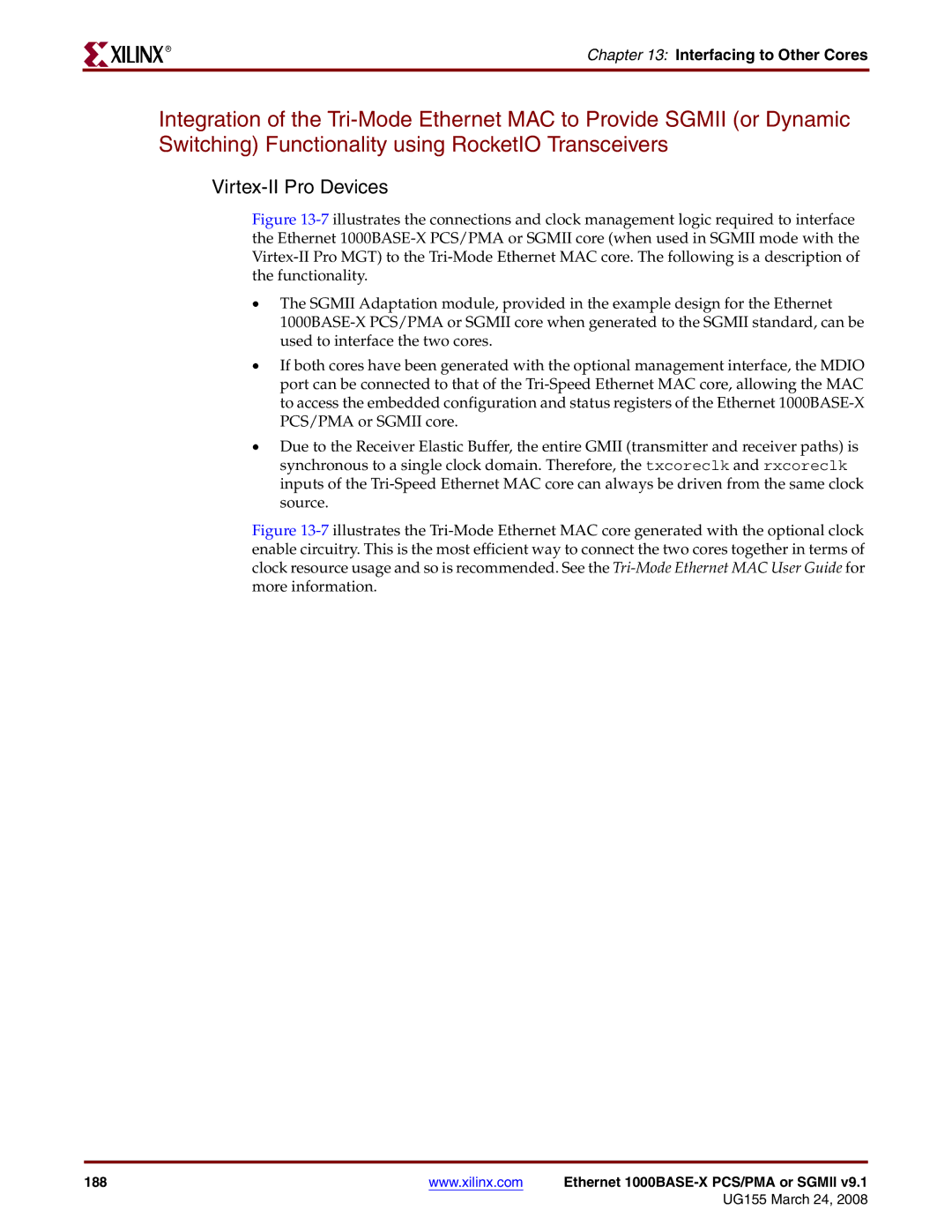
R
Chapter 13: Interfacing to Other Cores
Integration of the
Virtex-II Pro Devices
Figure 13-7 illustrates the connections and clock management logic required to interface the Ethernet 1000BASE-X PCS/PMA or SGMII core (when used in SGMII mode with the Virtex-II Pro MGT) to the Tri-Mode Ethernet MAC core. The following is a description of the functionality.
•The SGMII Adaptation module, provided in the example design for the Ethernet 1000BASE-X PCS/PMA or SGMII core when generated to the SGMII standard, can be used to interface the two cores.
•If both cores have been generated with the optional management interface, the MDIO port can be connected to that of the Tri-Speed Ethernet MAC core, allowing the MAC to access the embedded configuration and status registers of the Ethernet 1000BASE-X PCS/PMA or SGMII core.
•Due to the Receiver Elastic Buffer, the entire GMII (transmitter and receiver paths) is synchronous to a single clock domain. Therefore, the txcoreclk and rxcoreclk inputs of the Tri-Speed Ethernet MAC core can always be driven from the same clock source.
Figure 13-7 illustrates the Tri-Mode Ethernet MAC core generated with the optional clock enable circuitry. This is the most efficient way to connect the two cores together in terms of clock resource usage and so is recommended. See the Tri-Mode Ethernet MAC User Guide for more information.
188 | www.xilinx.com | Ethernet |
|
| UG155 March 24, 2008 |
